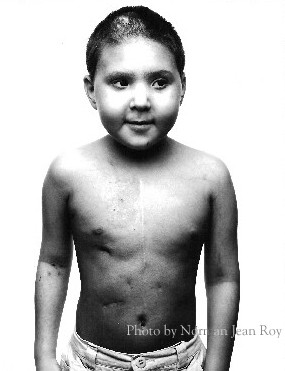
I have written you in the past about how FA patients are often really good athletes. Here's one.

March 31, 2007
Kuell finds new life after anemia misery
BY MIKE CHERRY
FLORIDA TODAY
To watch Brian Kuell pound his groundstrokes or attack a volley this spring, one would think much of his time has been spent on a tennis court.
Actually, Kuell has spent more figurative time in recent years in the woods. He is still not out of them.
"There's no point in worrying about something I have no control over," Kuell said after a recent match. "It's wasted energy, if you ask me."
The 18-year-old Kuell is a senior at West Shore Junior/Senior High and the No. 2 singles player for the Wildcats. He is 7-2 in singles -- he lost one match subbing at No. 1 -- and 9-0 at No. 1 doubles with the squad's top player, senior C.J. Johnson.
Those are good credentials, ones that rise when Fanconi anemia, which Kuell has, is considered. Because of that inherited disease, Kuell missed not just his junior-year tennis season, but that school year. He spent nine months receiving treatment at the University of Minnesota hospital, a stay that ended early last year.
"Last year at (about) this time," said Kuell's mother, Carol, "we didn't know if he was going to come back with us. Everything he does is an accomplishment."
The 5-foot-10 Kuell downplays his return to competitive tennis. What else, he thinks, should he be doing?
Still, there cannot be many high school players competing this spring who have had bone-marrow transplants.
"He is a huge positive influence on the team," West Shore coach Jim Rossi said.
Once a junior-tournament competitor, Kuell is perhaps through with team tennis after this season. He will attend the University of Florida next school year and study business. He has no plans to attempt to play for the Gators.
"I want to play for fun," Kuell said.
Even at Florida, Kuell, who lives with his parents in Melbourne Beach, will still have his blood checked every four months, plus take an annual visit to Minnesota for a bone-marrow biopsy. Although the blood problems were taken care of with the transplant, there is still the increased threat of cancer because of the Fanconi.
"It still isn't over for him," Carol said.
The disease was first discovered in Kuell about five years ago. His tennis coach, Tracy Singian, noticed he could not last as long in training sessions. One initial thought, Kuell said, was that he was merely fatigued from the end of football season (he played for a West Melbourne junior team). Blood tests, however, discovered the disease, which attacks the bone marrow and can also lead to leukemia.
In 2005, the disease worsened, causing his blood counts to drop.
"He was basically dying," Carol said.
After the first donor was not able to donate, a second, a fireman from San Antonio, was found. Kuell first had chemotherapy to kill the rest of the old cells. He then accepted the transplant, which entered the body through an IV. That was a critical time for Kuell, who was susceptible to numerous diseases and ailments because the white blood cells were temporarily gone.
"He threw up a gallon of blood one night," said Kuell's father, Bill.
Kuell had developed an ulcer. There were worries about infection and kidney and liver failures. Yet Kuell's health improved and he was finally released early last year. His parents spent the nine months with him in Minnesota, staying in an apartment.
"While we were up there, we watched 10 kids die," Bill said.
One oddity is that Kuell's blood type switched from O-positive to B-negative.
"He's in better shape than before the transplant," Bill said. "He used to take tennis more seriously. Now, it's fun for him."


No comments:
Post a Comment